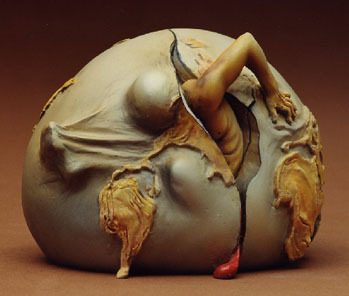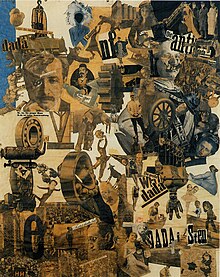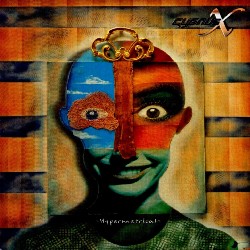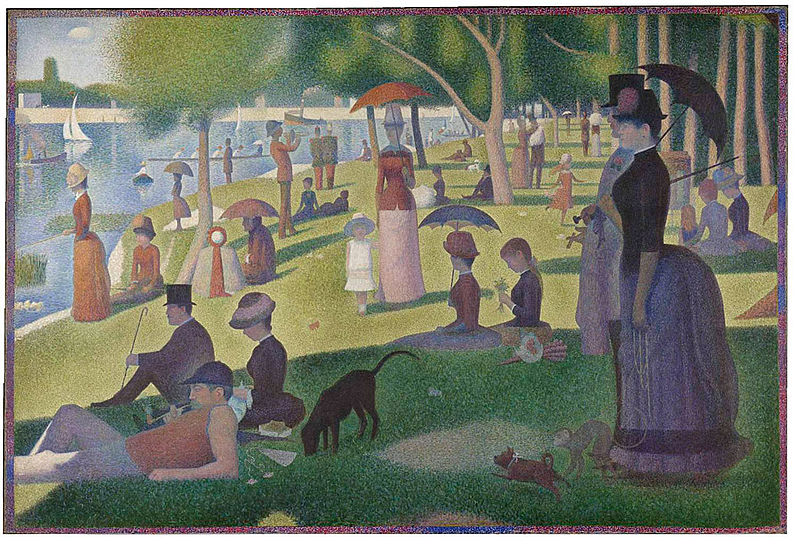A French 19th century art movement which marked a momentous break from tradition in European painting. The Impressionists incorporated new scientific research into the physics of colour to achieve a more exact representation of colour and tone.The sudden change in the look of these paintings was brought about by a change in methodology: applying paint in small touches of pure colour rather than broader strokes, and painting out of doors to catch a particular fleeting impression of colour and light. The result was to emphasise the artist's perception of the subject matter as much as the subject itself.
''Impression—I was certain of it. I was just telling myself that, since I was impressed, there had to be some impression in it ... and what freedom, what ease of workmanship! Wallpaper in its embryonic state is more finished than that seascape.''
Louis Leroy
Impressionism is a depiction of an artist’s impression. It does not aim to be accurate in detail which one finds in the realist and neo-realist style. But the impression often elicits a stronger emotional appeal which is variously triggered in the beholder. Many impressionist paintings have a soft nebulous rendering of its subject, almost dream-like. Rules about perspective, clean definite lines and interplay of light and shadows no longer apply. It is a spontaneous expression, often discarding the basic ability to draw correctly and becomes more an interplay of colors. Because it is an impression, every impressionist painting becomes more an expression of the heart.
Impressionist art is a style in which the artist captures the image of an object as someone would see it if they just caught a glimpse of it. They paint the pictures with a lot of color and most of their pictures are outdoor scenes. Their pictures are very bright and vibrant. The artists like to capture their images without detail but with bold colors. Some of the greatest impressionist artists were Edouard Manet, Camille Pissaro, Edgar Degas, Alfred Sisley, Claude Monet, Berthe Morisot and Pierre Auguste Renoir.Manet influenced the development of impressionism. He painted everyday objects. Pissaro and Sisley painted the French countryside and river scenes. Degas enjoyed painting ballet dancers and horse races. Morisot painted women doing everyday things. Renoir loved to show the effect of sunlight on flowers and figures. Monet was interested in subtle changes in the atmosphere


Camille Pissarro
 Edouard Manet
Edouard Manet
Many Impressionists painted pleasant scenes of middle class urban life, extolling the leisure time that the industrial revolution had won for middle class society. In Renoir's luminous painting Luncheon of the Boating Party, for example, young men and women eat, drink, talk, and flirt with a joy for life that is reflected in sparkling colors. The sun filtered through the orange striped awning colors everything and everyone in the party with its warm light. The diners' glances cut across a balanced and integrated composition that reproduces a very delightful scene of modem middle class life.
In its day, Impressionism was considered a radical departure from tradition. Looking back, we can see that Impressionism was more than a departure – It changed the very nature of the way people think about art today. Thanks to all the very Impressionists for striving to push forward in what they believe in we would not have this very fine art style we call Impressionism today.
When the Impressionists began painting, Ideals of art were not only controlled, but also looked down upon and rejected by academic institutions such as the French academy of fine arts and the Salon, which had great power over the careers of artists. Even through the hardships, the Impressionists did not give up on the art that they believed in.




























 Aubrey Beardsley
Aubrey Beardsley



